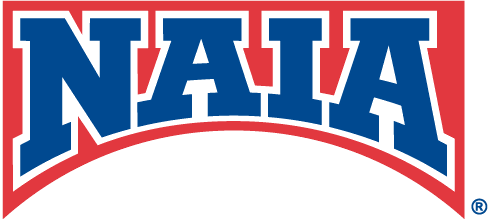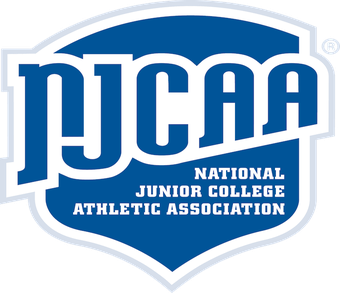CROSS COUNTRY SCHOLARSHIP IN USA
CROSS COUNTRY - MAN
N. Universities
Máx. Scholars/Team
Avg. Players/Team
NCAA Div. I
N. Universidades
289
Máx. Becas/Equipo
12.6
Media Jug./Equipo
39
NCAA Div. II
N. Universidades
225
Máx. Becas/Equipo
12.6
Media Jug./Equipo
34
NCAA Div. III
N. Universidades
325
Máx. Becas/Equipo
–
Media Jug./Equipo
33
NAIA
N. Universidades
186
Máx. Becas/Equipo
12
Media Jug./Equipo
26
NJCAA Div. I & III
N. Universidades
96
Máx. Becas/Equipo
20
Media Jug./Equipo
17
Total
N. Universidades
1121
CROSS COUNTRY - WOMEN
N. Universities
Máx. Scholars/Team
Avg. Players/Team
NCAA Div. I
N. Universidades
338
Máx. Becas/Equipo
18
Media Jug./Equipo
39
NCAA Div. II
N. Universidades
249
Máx. Becas/Equipo
12.6
Media Jug./Equipo
29
NCAA Div. III
N. Universidades
320
Máx. Becas/Equipo
–
Media Jug./Equipo
28
NAIA
N. Universidades
201
Máx. Becas/Equipo
12
Media Jug./Equipo
21
NJCAA Div. I & III
N. Universidades
109
Máx. Becas/Equipo
20
Media Jug./Equipo
11
Total
N. Universidades
1217
COLLEGE DIVISIONS

NCAA is the largest collegiate athletic association with the largest number of scholarships among its disciplines, as well as the largest athletic facilities. It is composed of 3 different divisions:
Formed by more than 200 large institutions and where the average level of the player is higher, since it represents the previous step to the big professional events. Most of the major universities in the USA belong to this division. To qualify for a scholarship in this division, you must have a high level and versatile profile.
Composed of smaller universities compared to Division I (between 5000 and 10000 students enrolled), these are institutions where education is closer and more specialized. The level of the average player is somewhat lower, but still high. However, it is very common for top Division II universities to be able to beat Division I college teams. To qualify for a basketball scholarship in this division, you must have a high-level athletic profile.
Formed by universities that are more defined in terms of academic programs and for which there are no athletic scholarships, but there are academic scholarships, scholarships to international students and loans. They have competitions, but are not part of such professionalized programs. The level is lower compared to the previous ones, so it is ideal for good students with an acceptable sports profile.

NAIA is a collegiate athletic association made up of more than 300 institutions, which have fewer enrolled students than those belonging to the NCAA and have smaller campuses. However, the requirements are lower and it is made up of universities with high academic and athletic recognition. The level of the average player may be lower when compared to NCAA Division I, although there are very similar cases. In fact, there are some really competitive teams.

Popularly known as Junior College or Community College, these are 2-year academic programs that serve as a stepping stone to college enrollment. At the athletic level, it serves as a showcase for those athletes who found it difficult to be admitted to the NCAA or NAIA.
NCAA (National Collegiate Athletic Association)
NCAA is the largest collegiate athletic association with the largest number of scholarships among its disciplines, as well as the largest athletic facilities. Está compuesta por 3 divisiones diferentes:
- División I: Formada por más de 200 instituciones de gran tamaño y donde el nivel medio del deportista es más elevado, ya que representa el paso previo a los grandes eventos profesionales. La mayoría de las grandes universidades en USA pertenecen a esta división. Para optar a una beca en esta división, deberás contar con un perfil de gran nivel y polivalencia.
- División II: Compuesta por universidades de menor tamaño con respecto a División I (entre 5000 y 10000 alumnos matriculados), son instituciones donde la educación es más cercana y especializada. El nivel del deportista medio resulta algo inferior, pero sigue siendo elevado. Sin embargo, es muy habitual que las mejores universidades de División II sean capaces de ganar a equipos universitarios de División I. Para optar a una beca de baloncesto en esta división, deberás contar con un perfil deportivo de alto nivel.
- División III: Formada por universidades más definidas en cuanto a programas académicos y para los que no existen becas deportivas, pero sí becas académicas, becas a estudiantes internacionales y préstamos. Poseen competiciones, pero no forman parte de programas tan profesionalizados. El nivel es inferior en comparación con las anteriores, por lo que resulta idóneo para buenos estudiantes con un perfil deportivo aceptable.
NAIA (NATIONAL ASSOCIATION OF INTERCOLLEGIATE ATHLETICS)
Una de las principales diferencias entre NAIA y NCAA radica en que son menores los requisitos exigidos para acceder a las universidades de NAIA. Son universidades más pequeñas, especializadas, y, en muchos casos, de gran prestigio académico y deportivo. El nivel deportivo medio, es más bajo que la NCAA, pero cuenta con grandes equipos y universidades.
Es corriente ver jugadores con nivel similar a la NCAA Div I o Div II.
NJCAA (NATIONAL JUNIOR COLLEGE ATHLETIC ASSOCIATION)
Esta organización está formada por pequeñas universidades, con estudios universitarios de 2 años, por lo que estos estudiantes deben transferirse de universidad para finalizar sus carreras. A nivel deportivo, sirve como trampolín para muchos deportistas que no han sido admitidos en NCAA o NAIA.
N. Universities
Máx. Scholars/Team
Avg. Players/Team
N. Universities
Máx. Scholars/Team
Avg. Players/Team